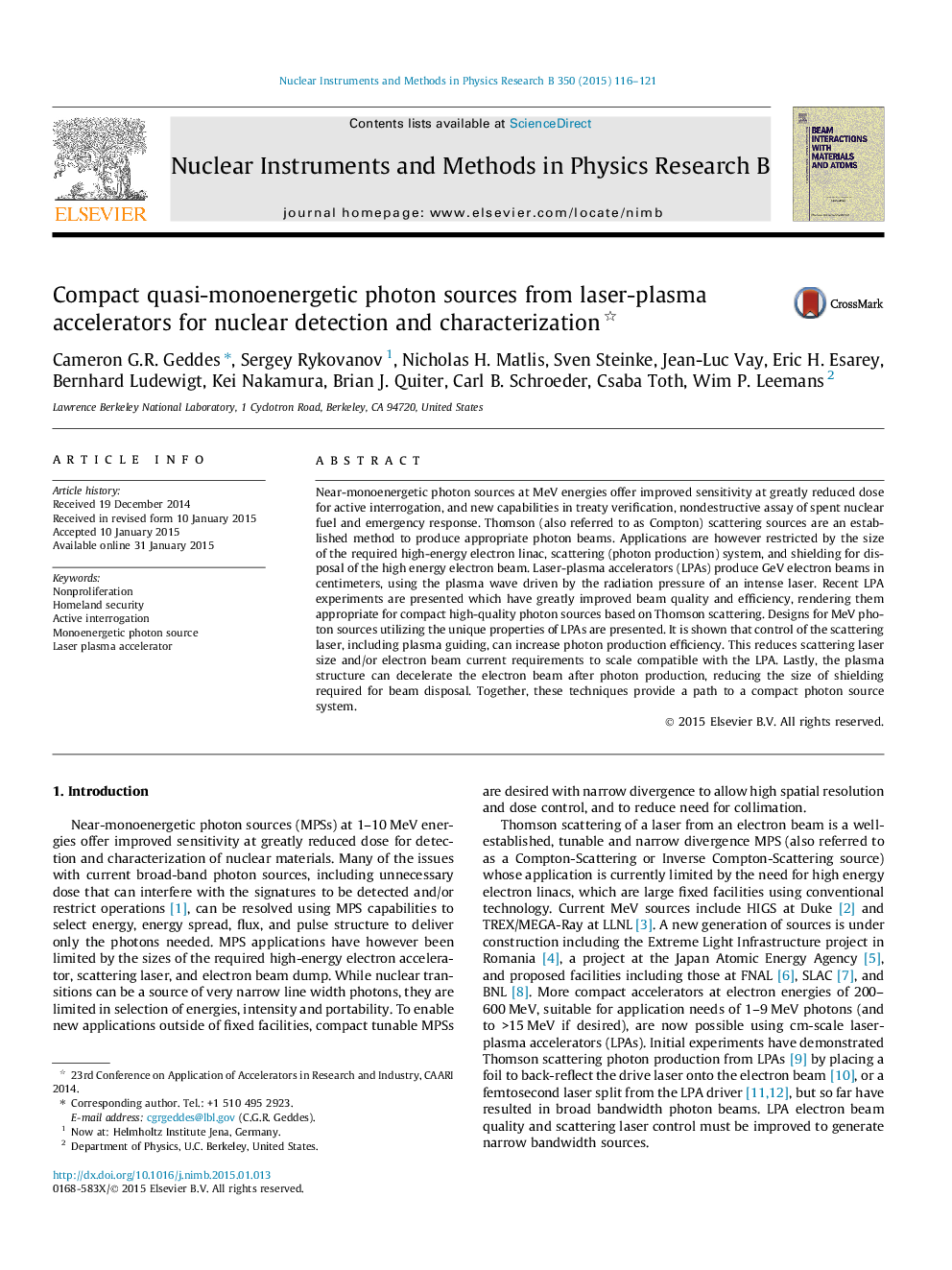| Article ID | Journal | Published Year | Pages | File Type |
|---|---|---|---|---|
| 1680710 | Nuclear Instruments and Methods in Physics Research Section B: Beam Interactions with Materials and Atoms | 2015 | 6 Pages |
Near-monoenergetic photon sources at MeV energies offer improved sensitivity at greatly reduced dose for active interrogation, and new capabilities in treaty verification, nondestructive assay of spent nuclear fuel and emergency response. Thomson (also referred to as Compton) scattering sources are an established method to produce appropriate photon beams. Applications are however restricted by the size of the required high-energy electron linac, scattering (photon production) system, and shielding for disposal of the high energy electron beam. Laser-plasma accelerators (LPAs) produce GeV electron beams in centimeters, using the plasma wave driven by the radiation pressure of an intense laser. Recent LPA experiments are presented which have greatly improved beam quality and efficiency, rendering them appropriate for compact high-quality photon sources based on Thomson scattering. Designs for MeV photon sources utilizing the unique properties of LPAs are presented. It is shown that control of the scattering laser, including plasma guiding, can increase photon production efficiency. This reduces scattering laser size and/or electron beam current requirements to scale compatible with the LPA. Lastly, the plasma structure can decelerate the electron beam after photon production, reducing the size of shielding required for beam disposal. Together, these techniques provide a path to a compact photon source system.
